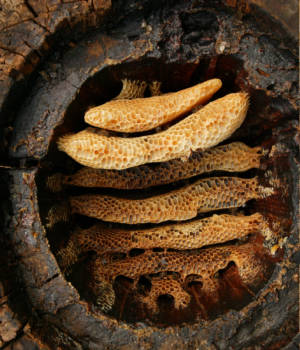Using AI to control energy for indoor agriculture
30 September 2024
Published online 12 November 2015
The human-honeybee partnership goes back at least to the beginnings of agriculture.

© Eric Tourneret
A study published in Nature yesterday finds the ‘oldest evidence yet’ for the use of honeybees by Neolithic farmers, dating back to the seventh millennium BC. It also presents the first evidence for honeybee exploitation in North Africa.
“The most obvious reason for exploiting the honeybee would be for honey, as this would have been a rare sweetener for prehistoric people,” says lead author Mélanie Roffet-Salque from the University of Bristol, UK. “However, beeswax could have been used in its own right for various technological, ritualistic, cosmetic and medicinal purposes.”
Previous evidence for the association of humans with honeybees has been variously inferred from ancient Egyptian iconography, rock art and beeswax finds. However, researchers, including Jamel Zoughlami from the Institut National du Patrimoine de Tunis, in Tunisia, have now detected the distinctive ‘fingerprint’ of beeswax at multiple Neolithic sites indicating how widespread the association between early farmers and honeybees is.
Beeswax is made up of a complex suite of lipids that are highly constant in composition and can therefore act as a chemical fingerprint on archaeological artefacts, such as pottery vessels, acting as a proxy for the presence of honeybees.
Using lipid residues preserved on 6,400 pottery vessels from over 150 Old World archaeological sites, the researchers provide the first ancient biomolecule-based palaeoecological map of the distribution of this economically and culturally important insect across Europe, the Middle East and North Africa.
doi:10.1038/nmiddleeast.2015.218
Stay connected: